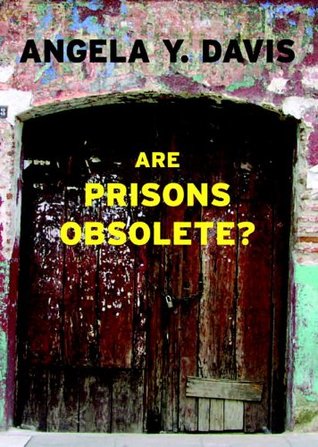More on this book
Community
Kindle Notes & Highlights
The prison therefore functions ideologically as an abstract site into which undesirables are deposited, relieving us of the responsibility of thinking about the real issues afflicting those communities from which prisoners are drawn in such disproportionate numbers. This is the ideological work that the prison performs—it relieves us of the responsibility of seriously engaging with the problems of our society, especially those produced by racism and, increasingly, global capitalism.
The prison has become a black hole into which the detritus of contemporary capitalism is deposited. Mass imprisonment generates profits as it devours social wealth, and thus it tends to reproduce the very conditions that lead people to prison.
The history of visuality linked to the prison is also a main reinforcement of the institution of the prison as a naturalized part of our social landscape.
prison reveals congealed forms of antiblack racism that operate in clandestine ways. In
white men sometimes sought to escape punishment by disguising themselves as black.
Convicts, on the other hand, were leased not as individuals, but as a group, and they could be worked literally to death without affecting the profitability of a convict crew.
While the convict lease system was legally abolished, its structures of exploitation have reemerged in the patterns of privatization, and, more generally, in the wide-ranging corporatization of punishment that has produced a prison industrial complex.
Prior to the appearance of punitive incarceration, such punishment was designed to have its most profound effect not so much on the person punished as on the crowd of spectators. Punishment was, in essence, public spectacle. Reformers such as John Howard in England and Benjamin Rush in Pennsylvania argued that punishment—if carried out in isolation, behind the walls of the prison—would cease to be revenge and would actually reform those who had broken the law.
philosophical, cultural, and popular ideas. It is thus important to grasp the fact that the prison as we know it today did not make its appearance on the historical stage as the superior form of punishment for all times. It was simply—though we should not underestimate the complexity of this process—what made most sense at a particular moment in history. We should therefore question whether a system that was intimately related to a particular set of historical circumstances that prevailed during the eighteenth and nineteenth centuries can lay absolute claim on the twenty-first century.
Before the acceptance of the sanctity of individual rights, imprisonment could not have been understood as punishment. If the
the prison sentence, which is always computed in terms of time, is related to abstract quantification, evoking the rise of science and what is often referred to as the Age of Reason.
This mode of prison labor, which was called congregate, was supposed to unfold in total silence. Prisoners were allowed to be with each other as they worked, but only under condition of silence.
Today, aside from death, solitary confinement—next to torture, or as a form of torture—is considered the worst form of punishment imaginable. Then, however, it was assumed to have an emancipatory effect.
Literature has continued to play a role in campaigns around the prison.
There has always been a tendency to regard those women who have been publicly punished by the state for their misbehaviors as significantly more aberrant and far more threatening to society than their numerous male counterparts.
According to dominant views, women convicts were irrevocably fallen women, with no possibility of salvation.
tendency to send women to prison for longer terms than men was accelerated by the eugenics movement, “which sought to have ‘genetically inferior’ women removed from social circulation for as many of their child-bearing years as possible.ʺ85
demands for parity with men’s prisons, instead of creating greater educational, vocational, and health opportunities for women prisoners, often have led to more repressive conditions for women.
One conclusion to be drawn here is that even if private prison companies were prohibited—an unlikely prospect, indeed—the prison industrial complex and its many strategies for profit would remain relatively intact. Private prisons are direct sources of profit for the companies that run them, but public prisons have become so thoroughly saturated with the profit-producing products and services of private corporations that the distinction is not as meaningful as one might suspect.
landscape. Schools can therefore be seen as the most powerful alternative to jails and prisons. Unless the current structures of violence are eliminated from schools in impoverished communities of color—including the presence of armed security guards and police—and unless schools become places that encourage the joy of learning, these schools will remain the major conduits to prisons.
category “lawbreakers” is far greater than the category of individuals who are deemed criminals since, many point out, almost all of us have broken the law at one time or another. Even


